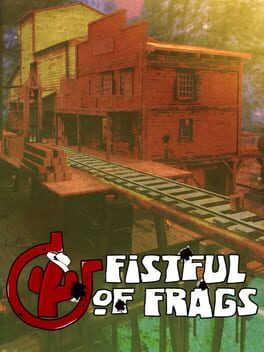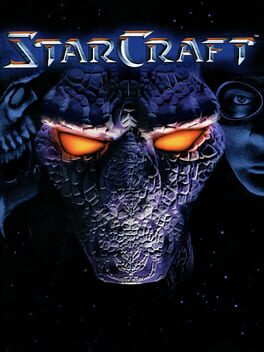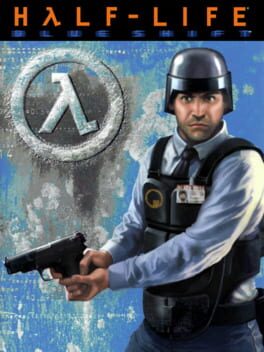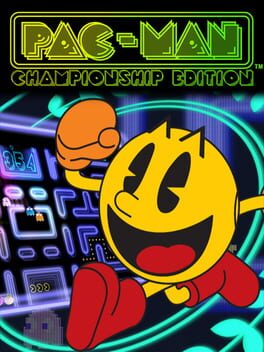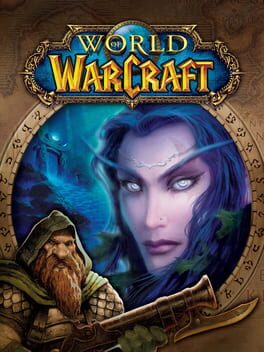Dtrytts
2004
A lot of Monster Hunter fans, including those more inclined toward the older entries, dismiss this game as a withered old fossil, something to pry at with curious fingers but ultimately leave in the dirt where it belongs. Not I.
I came to Monster Hunter at a youthful age, piddling around in Monster Hunter Tri with basically no clue what's going on. I hit a wall on Barroth and only much later managed to progress, but by then, 3 Ultimate was on the horizon. It was then that I became completely hooked on Monster Hunter. Most of my time spent was totally alone, though I did have extensive experience in 3 Ultimate and 4 Ultimate multiplayer. To this day, I consider myself almost exclusively a solo Monster Hunter player, and judge the games as such. Eventually seeking new territory, I traipsed over to Freedom Unite without much in the way of expectations. I was blown away. The struggle, the triumph, the absolute madness of that game inspired me, and I had a blast. The older design philosophy certainly resonates with me; I don't want too many conveniences, I want an ample supply of unfair, janky, ludicrous bull to overcome. I want money to feel earned and valuable, I want inventory space to matter, I want meaningful and impactful decisions to make in regard to my preparation before a fight and my arsenal. There are monsters that a Greatsword is really going to struggle with, fights that better suit a Longsword or the Dual Blades. I don't want an even playing field, I want to persevere, to survive. Anyone who's fought a Plesioth knows exactly what I'm talking about. The guy's like 30 feet tall, so weapons that can consistently attack high might have an advantage. He spends a million years just swimming around, wasting your time, so you'd better bring sonic bombs. You must assume that around every corner, after every moment, a hipcheck is coming. And when you conquer that beast, the feeling of victory is immeasurable. Through these challenges, these inconveniences, Monster Hunter becomes a game of patience, of strife, of survival.
In no entry is that more true than in Monster Hunter 2004.
This game goes whole-hog, full-blown, heavy-metal. It's serious. This is not a joke. Yian Kut-Ku will kick your butt like it's got something better to do, Gendrome will not face you without a swarm of Genprey backing it up. An area full of Bullfango poses a greater threat than the Cold War. The slightest miscalculation, the most minute of mistakes, and the bombs drop. Your pickaxes break instantly and you will never, ever have enough money. It took a vast, concerted effort to craft my first armor set, and each piece felt like I'd climbed a mountain. It's such a thrill to play a game that actually wants to challenge you - truly challenge you, not just with difficult tests of reflexes or complex strategic situations, but genuinely test your will, your drive, your desire to succeed despite the world being against you. I just spent two hours trying to beat Rathalos. Each time, I thought I had him on the ropes. But there he goes, flying around, wasting minute after minute after minute. Every time I thought I was just a few slices away, he persisted, and my mistakes and poor preparation finally exhausted me. I have to go to bed tonight knowing the taste of failure. But that flavor is best followed up with a dessert of vengeance.
Ask yourself; when's the last time you truly felt the spark in you to overcome adversity?
This isn't some Dark Souls game where rolling makes you invincible, where every challenge is surpassed with a momentary test of reflexes. This isn't a game where your skill alone carries you, either; you need to work. You need to get on your knees and pick up 3 Blue Mushrooms before finishing that quest, or else you're gonna run out of health juice. Don't wanna do it? Don't feel like it? Well then. When Rathalos decides to pay you a visit, I hope those 4 Herbs are good enough to last you through the poison.
This is Monster Hunter in its truest form. The most streamlined incarnation of this series' beautiful mechanical systems. This is Monster Hunter, but you are an actual monster hunter. Not some moneybags superhero swimming in mass-produced Mega Potions.
Attacking with the analogue stick kinda sucks though. 7/7
I came to Monster Hunter at a youthful age, piddling around in Monster Hunter Tri with basically no clue what's going on. I hit a wall on Barroth and only much later managed to progress, but by then, 3 Ultimate was on the horizon. It was then that I became completely hooked on Monster Hunter. Most of my time spent was totally alone, though I did have extensive experience in 3 Ultimate and 4 Ultimate multiplayer. To this day, I consider myself almost exclusively a solo Monster Hunter player, and judge the games as such. Eventually seeking new territory, I traipsed over to Freedom Unite without much in the way of expectations. I was blown away. The struggle, the triumph, the absolute madness of that game inspired me, and I had a blast. The older design philosophy certainly resonates with me; I don't want too many conveniences, I want an ample supply of unfair, janky, ludicrous bull to overcome. I want money to feel earned and valuable, I want inventory space to matter, I want meaningful and impactful decisions to make in regard to my preparation before a fight and my arsenal. There are monsters that a Greatsword is really going to struggle with, fights that better suit a Longsword or the Dual Blades. I don't want an even playing field, I want to persevere, to survive. Anyone who's fought a Plesioth knows exactly what I'm talking about. The guy's like 30 feet tall, so weapons that can consistently attack high might have an advantage. He spends a million years just swimming around, wasting your time, so you'd better bring sonic bombs. You must assume that around every corner, after every moment, a hipcheck is coming. And when you conquer that beast, the feeling of victory is immeasurable. Through these challenges, these inconveniences, Monster Hunter becomes a game of patience, of strife, of survival.
In no entry is that more true than in Monster Hunter 2004.
This game goes whole-hog, full-blown, heavy-metal. It's serious. This is not a joke. Yian Kut-Ku will kick your butt like it's got something better to do, Gendrome will not face you without a swarm of Genprey backing it up. An area full of Bullfango poses a greater threat than the Cold War. The slightest miscalculation, the most minute of mistakes, and the bombs drop. Your pickaxes break instantly and you will never, ever have enough money. It took a vast, concerted effort to craft my first armor set, and each piece felt like I'd climbed a mountain. It's such a thrill to play a game that actually wants to challenge you - truly challenge you, not just with difficult tests of reflexes or complex strategic situations, but genuinely test your will, your drive, your desire to succeed despite the world being against you. I just spent two hours trying to beat Rathalos. Each time, I thought I had him on the ropes. But there he goes, flying around, wasting minute after minute after minute. Every time I thought I was just a few slices away, he persisted, and my mistakes and poor preparation finally exhausted me. I have to go to bed tonight knowing the taste of failure. But that flavor is best followed up with a dessert of vengeance.
Ask yourself; when's the last time you truly felt the spark in you to overcome adversity?
This isn't some Dark Souls game where rolling makes you invincible, where every challenge is surpassed with a momentary test of reflexes. This isn't a game where your skill alone carries you, either; you need to work. You need to get on your knees and pick up 3 Blue Mushrooms before finishing that quest, or else you're gonna run out of health juice. Don't wanna do it? Don't feel like it? Well then. When Rathalos decides to pay you a visit, I hope those 4 Herbs are good enough to last you through the poison.
This is Monster Hunter in its truest form. The most streamlined incarnation of this series' beautiful mechanical systems. This is Monster Hunter, but you are an actual monster hunter. Not some moneybags superhero swimming in mass-produced Mega Potions.
Attacking with the analogue stick kinda sucks though. 7/7
2007
Even just an hour or so of playing makes it obvious why Fistful of Frags is the greatest multiplayer shooter. It's the most fun parts (headshots, movement, multiple playstyles, satisfying guns) all refined to the perfect package. The revolvers are absurdly satisfying to shoot, and they've all got a ton of unique character). Kicking and wall-jumping and sliding are hard to pass up on, but you've got other perks like an extra tiny pistol, a couple sticks of dynamite, or brass knuckles to disarm your opponents. Matches are perfectly-long bloodbaths on some of the most well-designed maps I've ever encountered in the genre. Death pits, moving trains, windows, enormously tall open staircases - no map is devoid of providing creative arenas to jump and shoot in. Loot chests litter these maps and provide varying degrees of additional weaponry, including an endless dynamite vest and a very slow-reloading revolver powerful enough to oneshot enemies at close range. Core movement options are limited, so every step matters, especially when moving comes at the cost of accuracy. If you want to land a shot, you need to slow down, crouch, or look down your sights. After a scuffle, you're likely to be nearly dead, so you'll have to peruse various shelves and safes to find jugs of glorious whiskey - though even that will get you drunk and mess up your aim momentarily. It's a game where every one of its few pieces is constantly, violently ramming into the other ones; moment-to-moment gameplay in Fistful of Frags is perhaps more tense and deranged than in any other multiplayer shooter I've played. A big part of that is that guys are constantly spawning all around you, and the maps are usually pretty close-quarters. You never know who's right around the corner ready to unload a shotgun right into your head.
2004
I only play this game when it's dark outside and/or I'm sleep deprived. The surreal atmosphere and aimless nature of the game beg you to get absorbed in it. You might start to drift off and think about something else, to make plans for tomorrow or reflect on the previous day. Yume Nikki is a strange, comfortable, uncomfortable walk in the subconscious mind of a person. For me, it pushed the boundaries for what I'd consider to be a "videogame" - I still remember back when "walking simulator" seemed to me like a valid insult to lob at videogames. But videogames aren't just Morrowind, or Dark Souls, or Tetris. They can be a lot of different things. Yume Nikki is the closest a videogame has ever gotten toward being a person, I feel.
1998
For an optional visual aid, here's a link that might break:
https://starcraft.fandom.com/wiki/The_New_Dominion
Click on the image then select "see full sized image" and zoom in on the top left corner.
If the link is broken, look up "Starcraft 1 Zerg Mission 3" and find a picture of the map.
~
There's really a special kind of beauty in a Starcraft map - particularly in the ways that units and structures occupy it.
Starcraft displays most of its necessary visual information (where things are, and what they are) in a pretty blunt, pretty straightforward way. Units might be much bigger or smaller in the "lore" than they appear in-game, but we can't have units that are too big, it'd be a huge mess of visual garbage. Structures exist on an invisible grid, turning the formation of your base into something of a little SimCity/Tetris minigame. There's plenty of natural visual flourish, like magma beneath rocky terrain, the different colors on different maps, the little neutral creatures that roam around sometimes. But the grid-based building system and player-created units/structures mean that there's something special going on with the way that any given Starcraft match looks.
Take Supply Depots for example. You generally want to keep them out of the way so you aren't cluttering up your base, which may mean you clump them up together in a corner, but you also might use them to wall off certain areas, to prevent anything from getting into your base, or to make a strategic little tunnel that only your Marines (and not enemy Zealots) can get through.
A Bunker, likely filled with 4 Marines, can cover a ramp leading into your base. If any enemy land units want in, they have to come past the Bunker. If they want to stop the Marines from firing, they'll need to destroy the Bunker. So putting one right next to the ramp is just obviously a great idea, and even when I was a baby I knew this - in part, maybe, because the singleplayer enemies also make use of these basic strategies most of the time.
Because of the function of Bunkers and Supply Depots, because of what they mechanically represent, they tend to be placed in specific, frequent patterns. Most players will place them similarly, which creates a sort of strategically and culturally-evolved aesthetic that defines how Starcraft looks at any given moment.
Here are some more examples;
Siege Tanks can frequently be found on the high ground, overlooking the outskirts of a base. They might be stacked together to maximize damage within a specific spot, or spread out to increase the area covered by their fire.
Missile Turrets are usually placed in a very particular way, spread out across the edges of a base so that they can totally wall off enemy air units from entering the base without getting hit - a much more tactically sound distribution than simply clumping them up haphazardly.
All of this planning, all of these details and strategies, come together to form the aesthetics of Starcraft. Sure, the maps would still be cool with nothing on them, but they're beautiful in the midst of a battle, when the game's mechanics and language and strategies naturally direct the aesthetic in pretty unique way.
It sort of goes without saying, but part of why this is so cool is because you can totally disregard all of these strategies and just randomly build wherever, but I think pretty much any human being who plays this game, regardless of skill level, will develop some sort of personal decisions about where and how they place buildings/units. They will develop a sort of visual style, in that way. Most players, though, will adopt relatively similar visual styles, as a result of shared knowledge and experience about what positions and formations find the most success. These styles are created, then, through the game's teaching (singleplayer campaigns), through the player's own process of learning, and through shared information and cultural knowledge (information we learn from other players, guides, etc. or just "common sense" ideas like defending tight choke points that many people will simply know and execute without being told to).
And there's way more of this stuff than just the few things I've mentioned - look at the massive clusters of Gateways, Factories, or Hatcheries that we build in neat arrays so that we can efficiently create armies, or the way we might scatter a couple of Marines or Dragoons around the base in case we need them to support our anti-air defenses in a pinch.
If you hop into the middle of a random Starcraft match, or observe the pre-made layouts of enemy AI bases in the singleplayer campaigns, the game's visual appearance will be more than just its sprites, more than just its polygons or pixels - it will represent the mechanical language of the game, the strategies players use to win games, and the advantageous "city planning" techniques which give rise to a loosely unified (though still player-expressive) set of "visual rules" for each and every structure and unit in the game.
https://starcraft.fandom.com/wiki/The_New_Dominion
Click on the image then select "see full sized image" and zoom in on the top left corner.
If the link is broken, look up "Starcraft 1 Zerg Mission 3" and find a picture of the map.
~
There's really a special kind of beauty in a Starcraft map - particularly in the ways that units and structures occupy it.
Starcraft displays most of its necessary visual information (where things are, and what they are) in a pretty blunt, pretty straightforward way. Units might be much bigger or smaller in the "lore" than they appear in-game, but we can't have units that are too big, it'd be a huge mess of visual garbage. Structures exist on an invisible grid, turning the formation of your base into something of a little SimCity/Tetris minigame. There's plenty of natural visual flourish, like magma beneath rocky terrain, the different colors on different maps, the little neutral creatures that roam around sometimes. But the grid-based building system and player-created units/structures mean that there's something special going on with the way that any given Starcraft match looks.
Take Supply Depots for example. You generally want to keep them out of the way so you aren't cluttering up your base, which may mean you clump them up together in a corner, but you also might use them to wall off certain areas, to prevent anything from getting into your base, or to make a strategic little tunnel that only your Marines (and not enemy Zealots) can get through.
A Bunker, likely filled with 4 Marines, can cover a ramp leading into your base. If any enemy land units want in, they have to come past the Bunker. If they want to stop the Marines from firing, they'll need to destroy the Bunker. So putting one right next to the ramp is just obviously a great idea, and even when I was a baby I knew this - in part, maybe, because the singleplayer enemies also make use of these basic strategies most of the time.
Because of the function of Bunkers and Supply Depots, because of what they mechanically represent, they tend to be placed in specific, frequent patterns. Most players will place them similarly, which creates a sort of strategically and culturally-evolved aesthetic that defines how Starcraft looks at any given moment.
Here are some more examples;
Siege Tanks can frequently be found on the high ground, overlooking the outskirts of a base. They might be stacked together to maximize damage within a specific spot, or spread out to increase the area covered by their fire.
Missile Turrets are usually placed in a very particular way, spread out across the edges of a base so that they can totally wall off enemy air units from entering the base without getting hit - a much more tactically sound distribution than simply clumping them up haphazardly.
All of this planning, all of these details and strategies, come together to form the aesthetics of Starcraft. Sure, the maps would still be cool with nothing on them, but they're beautiful in the midst of a battle, when the game's mechanics and language and strategies naturally direct the aesthetic in pretty unique way.
It sort of goes without saying, but part of why this is so cool is because you can totally disregard all of these strategies and just randomly build wherever, but I think pretty much any human being who plays this game, regardless of skill level, will develop some sort of personal decisions about where and how they place buildings/units. They will develop a sort of visual style, in that way. Most players, though, will adopt relatively similar visual styles, as a result of shared knowledge and experience about what positions and formations find the most success. These styles are created, then, through the game's teaching (singleplayer campaigns), through the player's own process of learning, and through shared information and cultural knowledge (information we learn from other players, guides, etc. or just "common sense" ideas like defending tight choke points that many people will simply know and execute without being told to).
And there's way more of this stuff than just the few things I've mentioned - look at the massive clusters of Gateways, Factories, or Hatcheries that we build in neat arrays so that we can efficiently create armies, or the way we might scatter a couple of Marines or Dragoons around the base in case we need them to support our anti-air defenses in a pinch.
If you hop into the middle of a random Starcraft match, or observe the pre-made layouts of enemy AI bases in the singleplayer campaigns, the game's visual appearance will be more than just its sprites, more than just its polygons or pixels - it will represent the mechanical language of the game, the strategies players use to win games, and the advantageous "city planning" techniques which give rise to a loosely unified (though still player-expressive) set of "visual rules" for each and every structure and unit in the game.
The beginning portions are definitely where Half-Life is strongest, which is part of why Blue Shift is so good. Blue Shift only sometimes mimics Half-Life's incredible horror atmosphere, but from start to finish, it's got a pretty limited arsenal. Yes - the huge arsenal is really fun in Half-Life - but it's also a product of that game's obsession with army man combat in its latter half. Blue Shift is much more restrained, and with a crisp, appetizing length of only some 2.5 hours, this is a Half-Life expansion for those who'd like a clever little "summary" of the original game. Half-Life takes a lot of influence from the cinematic medium, and Blue-Shift refines the game experience down into a movie-length, one-sitting side-story.
At least in some way, you can look at Ocarina of Time without comparing it to The Legend of Zelda (even if that comparison could reveal quite a lot), but Championship Edition is basically a creator-made mod of the original Pac-Man. It restructures the parts that were already present, creating out of them something new - it's Pac-Man, but instead of traversing a large maze totally filled to the brim with pellets, you're in a much tighter series of hallways, and you've only got so much time to gather those pellets as efficiently as possible. It's not as much about surviving as long as you can - surviving is easy in Championship Edition due to its basically endless lives - but you've got a solid, unshakable time limit dictating some sort of absolute maximum number of points you might be able to achieve. Actually achieving that maximum, though, is the ever-elusive promise that entices you to keep running the five-minute gauntlet.
2004

